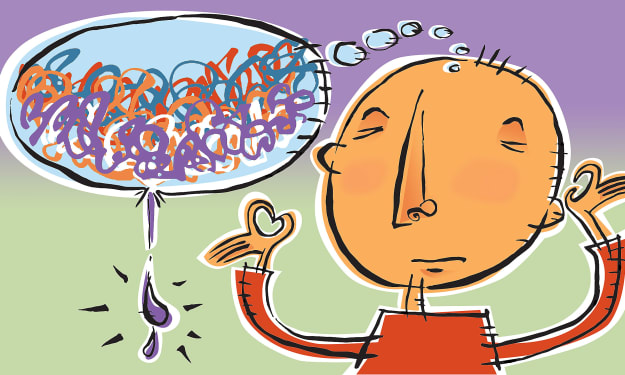Emotional Dependency in Relationships
physiological effects of love and addiction

Emotional dependency creates an inner emptiness where the person abandons themselves and expects their partner to fill their emptiness and make them feel loved and safe. In emotionally dependent relationships, normal ups and downs become artificially steep. The stability of the relationship becomes compromised by one’s dependency traits. The dependent person sets up conditions for pleasure that are impossible to maintain, guaranteeing failure and the distress which accompanies it. The emotionally dependent relationship occurs with significant overlap between the physiological effects of love and addiction. Social addiction nurtures defeatist ideas that cannot be changed because of altered thinking and behaviors, disconcerting dependency. (Jantz, 2015). Factors, both, emotional and physical, contribute to certain behaviors, either within a single relationship or switching relationships. The emotional dependent individual succumbs in relationships both romantic relationships and parent-child relationships. Whereby, the dependent person does not take full responsibility for their own feelings, e.g.; nurturing painful life feelings of loneliness, helplessness over others, heartache, heartbreak, sorrow and grief. Furthermore, the dependent does not define their own inner worth, instead, makes others' approval and attention responsible for their sense of worth. Dependency relationships makes unhealthy relationship situations that causes wounded feelings of anxiety, depression, victim hurt, guilt, shame, anger and jealousy (Paul, 2010).
Bosurgi, (2018) offers emotional dependency is a condition which seems to affect a large segment of society, and has proven to be the hidden root-cause of many forms of anxiety and fear. This condition relates to Adult Emotional Dependency (AED) with symptoms of generalized anxiety, unjustified unsafe feelings, fear of judgement and rejection, need for approval, confidence issues, performance anxiety, social anxiety, starvation for love and attention, depression, alcohol and drugs abuse, addictions, feeling overwhelmed or tired, neediness or emotional numbness and deficient in performance. Emotional dependency can build complex and painful layers of anxiety and fear which typically results in many debilitating emotions/feelings. Adult Emotional Dependency (AED) causes divergent symptoms relating emotionally dependency upon others; e.g.; peers, colleagues, friends, family, partners, social environment; not necessarily upon a specific person; as source of protection, approval, leadership and emotional fulfillment. The emotionally dependent person also expresses a fear of judgment, rejection and abandonment (Bosurgi, 2018).
Beliefs;
• External leadership and/or validation
• Over-giving to being a ‘pleaser’
• Accepting abuse to get affection
Feelings;
• Self-doubt
• Neediness and self-focus
• Inadequacy
• Social anxiety
• Chronic insecurity
• Lacking an identity
• Being a fraud and a failure
• Being a child in a world of adults
• Resentment for the lack of external leadership and support
Emotional dependency symptoms;
• Anxiety
• Stress
• Addictions
• Feeling overwhelmed and tired
• Depression
• Dependency in relationships
• Starvation for love and attention
• Loneliness and solitude
• Loss of spirit-mind connection
• Panic attacks
• Chronic anger
• Unwarranted fears
• Inferiority complexes
• Antisocial tendencies
• Emotional and spiritual numbness
• Borderline personality
• Unsuccessful personal life and relationships
• Unfulfilled artistic and professional aspirations
(Bosurgi, 2018).
Bosurgi, (2018) suggests emotional dependence begins as an adolescent approaches puberty their natural need for self-leadership and emotional independence starts to awaken with the purpose of converting their relationships from dependent to independent. The level of success achieved in their transition to emotional independence is determined by the life-models they have learned from their parents. Emotional Dependency induces powerful emotions to persuade a child to seek; safety (seeking protection upon adults), mental development (seeking leadership validation and guidance), and emotional fulfillment (seeking love and care).
Emotional Dependency starts at birth and is terminated just before puberty. At this age, adolescents enter the phase of emotional self-reliance. Whereby, shifting their fulfillment of emotional needs from parents to themselves. Young adults terminate their emotional dependency inducing models of self-reliance learned from parents and caregivers. When young adults are unable to embrace their own emotional fulfillment, emotional dependency remains active into adulthood, shifting the fulfillment of their emotional needs from parents to ‘others’. This defines the distressing condition of Adult Emotional Dependency (AED). If there is a deficit from the parents and caregivers by not achieving emotional independence themselves, they cannot provide an appropriate model to teach these essential life skills to their children. Deprived of proper emotional self-reliant edification, the adolescent doesn't own the necessary awareness and tools needed to reach emotional independence. Consequently, this ensures emotional dependency stays active after puberty, transferring the compelling need for leadership, love, safety, validation and guidance from 'parents' to 'others', i.e. friends, partners, colleagues, social environment, and carrying through to their entire life (Bosurgi, 2018).
People with uncertainty in how to manage themselves emotionally are more likely to reach out for someone else to do it for them. There is a profound understandable yearning for intimacy that associates a grief for a lost self-connection which deserves heartfelt sympathy. These agonising moments of dependency can often be accompanied with mental obsession. Common themes in dependency also include low self-esteem and a lack of assertiveness. This could be caused by varied factors with mutual consequences of people being taught at a very early age that they are not fully allowed to self-express themselves, or assert themselves. Children who are emotionally harmed usually have no choice but to accept what is being done to them. They are in a natural position of both physically and mentally looking up to those who neglect or mistreat them. As they approach adulthood they carry this model of child-like helplessness with them wherever they go. This results in a tendency in relationships to agree too much, over empathise, give up too much or to make many excuses for aggressive or manipulative behaviour of others. The best way to cultivate self-respect is to start respecting themselves, which means respecting their own feelings, needs, views, rights and personal boundaries (Wise Mushroom, 2019).
Experts highlight emotional dependence doesn’t obey any one rule, and creating and maintaining it, is two separate things. In numerous cases it is not even a conscious reality, on the contrary, the individual with emotional dependence thinks the problem derived from their dependence has a different external origin. Emotional dependence is often complex and behind the dependence there is usually extreme fear. The person might be experiencing many fantasies about their own ability or place in the world. Even without existing evidence to support it; a belief that if they broke or laced certain bonds, they would be in grave danger. Emotional dependency type of dependency is like that experienced by an addict, entailing an abstention syndrome. These episodes of anxiety and depression appear when a disruption or disturbance breaks the bond or weaken momentarily. Existence itself can feel unbearable without the tie, whereby the emotionally dependent person undoubtedly suffers greatly. Emotional dependence dominates three types of dependence in relationships, such as; family, couples, and the social environment. As mentioned, family dependence usually corresponds to family structures where the parents suffer durable conditions of anxiety that is transmitted to their children. The latter, are educated with excessive fear of the world, and anything external is a threat and the family is the shelter (Exploring Your Mind, 2017). Studies suggest individuals who suffer from this type of dependence overvalue the safety obtained by the family. While there might be demonstrative bonds and affectionate gestures of solidarity, likewise these ties can depict insane traits, which signify repeated notions associating risk and the further from it, the better. In these types of families, self-confidence is not encouraged, with a belief that the individual will be incapable of facing great challenges. The family becomes a protection that shelters but also incarcerates. This reliance stems from dealing with anxiety in the wrong way revealing a vague response to the need to grow and be autonomous. Emotional dependence of the couple is, however, the most frequent and most harmful dependency. It’s erroneous belief assumes the couple gives meaning to their own life or protects them from terrible loneliness. Experts expose, the couple becomes the axis of life itself. This type of dependency is typical of people who carry great insecurities. In fact, they’re helpless, and they are unclear about what they are or their capabilities. Their need for support to survive against suffering or fear, develops a strong attachment as a protective shield which comes from the support from their partner. This type of dependence, in time can cause great suffering because the dependent person is so afraid of losing their partner and develops very harmful behaviour. Imminent factors of excessive jealously or unlimited submissive traits deteriorates the relationship rather than making it stronger. Consequently, the ramifications from emotional dependence on the social environment have characteristic aspects of excessive need to be recognised and approved in any environment. That is, the individual feels panicky if there is a lack of insufficient signs of ardent appreciation and acceptance. The dependent will do anything necessary to achieve the apparent psychological compensation. Whereby the feeling of rejection, from their perspective is possibly the worst thing that could happen. In achieving approval, the dependent person becomes servile or invisible, thus, they feel compelled to please others even exceeding themselves. These people will make great sacrifices so not to face rejection or confrontation. In this condition, the person relinquishes their convictions to dissipate tension in the environment, this can cause detrimental harm (Exploring Your Mind, 2017).
Family dependency, couple dependency and dependence on the social environment are types of emotional dependency that cause unhealthy relationships. Mental Health research on emotional and behavioural conditions offer emotional dependence affects the individual’s ability to have a healthy, mutually satisfying relationship. Furthermore, emotional dependences can stem from psychological conditions or disturb the relationship by which the person becomes emotionally controlling or manipulative to another. It can appear in individuals that were raised psychologically dysfunctional, emotionally neglectful or abusive environments. Many people don’t have the emotional tools to function healthily, simply because they were never taught and often educated with conflicting conditions. Psychoeducation can fill some gaps towards their emotional educational needs. This will increase a better understanding of how to live fulfilling lives covering key areas like coping with difficulties, succeeding endeavours and developing healthy relationships with both themselves and others.
References
Bosurgi, L. (2018). Adult Emotional Dependency (AED). Retrieved from https://lucabosurgi.com/adult-emotional-dependency-aed/
Exploring your mind, (2017). 3 Types of emotional dependence. Retrieved from https://exploringyourmind.com/3-types-emotional-dependence/
Jantz, G.L. (2015). The Role of the brain in love and relationship dependency. Psychology Today, Sussex Publishers. Retrieved from https://www.psychologytoday.com/us/blog/hope-relationships/201510/the-role-the-brain-in-love-and-relationship-dependency
Paul, M. (2010). What Is emotional dependency? Educational Technologies, Inc. Retrieved from https://www.innerbonding.com/show-article/2402/what-is-emotional-dependency.html
Weaver, R. (2019) Defining Emotional Dependency and the Top Five Ways to Become More Emotionally Independent. HER Inc. Retrieved from https://www.empowher.com/mental-health/content/defining-emotional-dependency-and-top-five-ways-become-more-emotional
Wise Mushroom, (2019). How to overcome emotional dependency. Retrieved from http://www.wisemushroom.org/how-to-overcome-emotional-dependency/
About the Creator
Shanie Walker
Shanie Walker is a Holistic Behavioural Therapist, awards, and honours in Art Therapy, Dialectic and CBT. Shanie is a Psychologist and Registered Professional Hypnotherapist. Accredited Nutritionist, and Master Degree in Fitness.






Comments
There are no comments for this story
Be the first to respond and start the conversation.